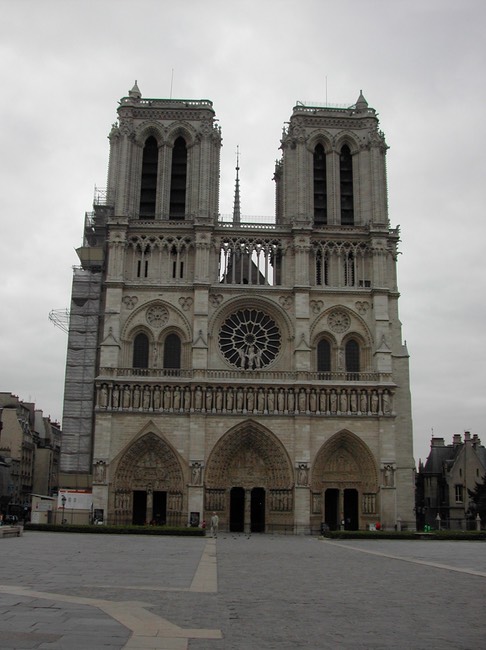Outside my doorstep runs a short street, one block long, lined with apartments and small businesses. The businesses are not the kind that will bring heavy traffic to the area– a tailor, a tiny academic bookshop, a Middle Eastern sandwich shop. The apartments are entered by massive doors of dark wood, presumably as well-secured as mine. A few steps takes me to the corner of the rue des Carmes, which runs downhill between the Pantheon and the Seine. The domed edifice looms above me at the top of the hill; in the other direction, the towers of Notre-Dame can be seen.
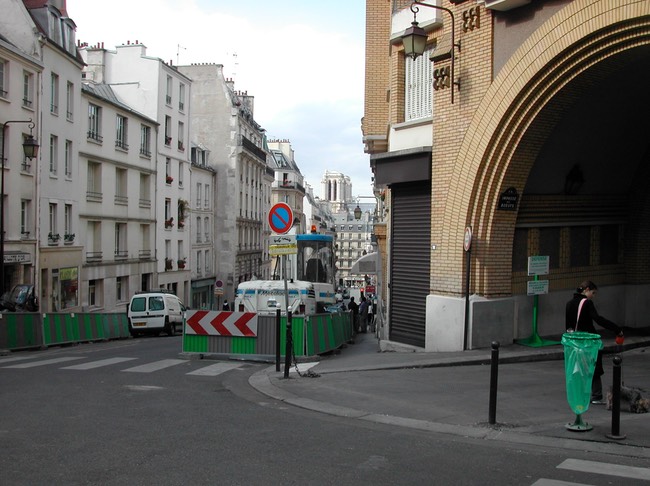
It is early. People are passing quickly along the narrow streets, on their way to work. Halfway down the hill at Place Maubert, commuters come and go from the Metro entrance, while merchants busily set up their stalls at the small market. It is not the larger, more colourful Saturday version, but the more down-to-earth market of mid-week, providing the daily necessities of fruit, nuts, vegetables, and fish for the residents of the area. The boulangerie facing the square is doing a brisk business.
I walk through the still-quiet streets down toward the river, crossing the noisy rue Saint-Germain, with its lanes of traffic and large cafes and restaurants. Between here and the river, the outdoor tables are just beginning to fill up with breakfasting tourists. As I walk onto one of the many bridges that crisscross the river, I feel the morning sun on my face.
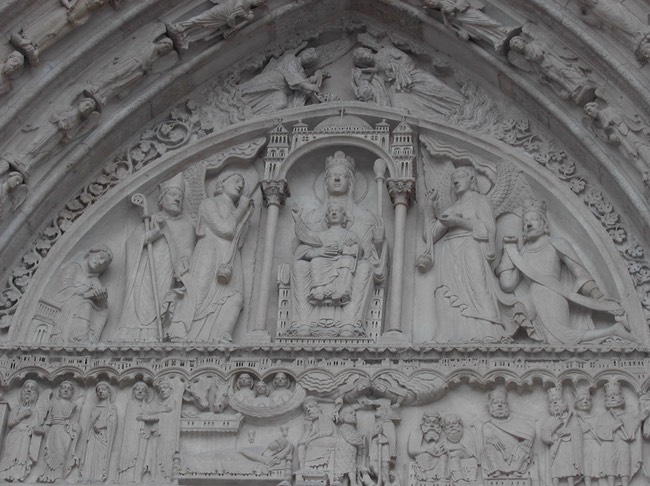
Across the river, the large square in front of Notre-Dame is largely empty at this hour. The sun shines behind the massive cathedral, casting shadows upon the ground. Later in the afternoon, when the sun is in the west, it will light up the creamy stone of the façade, highlighting the arches of intricate sculptures that surround the huge doors. There, amid the saints, angels, and Biblical kings that preside over this immense house of God, my eyes seek out the figures of people long dead; men whose faces and names were well-known to the Parisians of eight hundred years ago, but whose fame is now limited to those like myself, students of this place in that time: King Louis VII, the pious twelfth-century king whose patronage helped make the cathedral a reality, and Bishop Maurice de Sully, the holy and humane man whose vision it was. Although neither man lived to see the façade raised, their figures have presided down through the centuries over one of the great portals. I gaze up at their reproductions now in some undefined hope of communion with their long-vanished spirits.
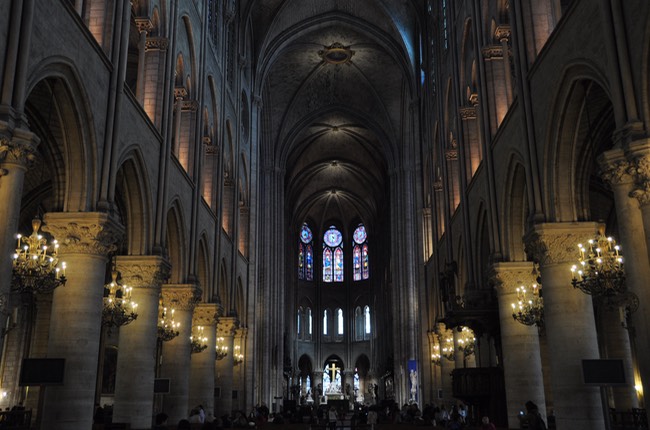
In a short time, this square will begin to fill, and will be busy throughout the day. Now, only the devout enter those great portals, and a few early risers who yearn to experience the cathedral without the crowds. Inside, it is very peaceful, only quiet footsteps and a few hushed voices breaking the profound, dimly-lit silence. As I look down the length of the nave, the massive columns that rise up along its length act as a wall, through which occasional glimpses of the side chapels can be seen. The nave appears narrow and very high, and there is not the blaze of colour and light that characterizes some of the smaller churches of its era. The encircling windows, high above the floor of the immense place, are rich in the deep, ancient colours of the thirteenth-century glassmakers, but they admit little light into the long, high space. At the end of the nave, however, the choir with its magnificent great altar gleams with the colour of its surrounding circle of windows. There is symbolism in this; perhaps deliberate, perhaps a happy accident of the challenges of designing a structure which was the largest of its day.
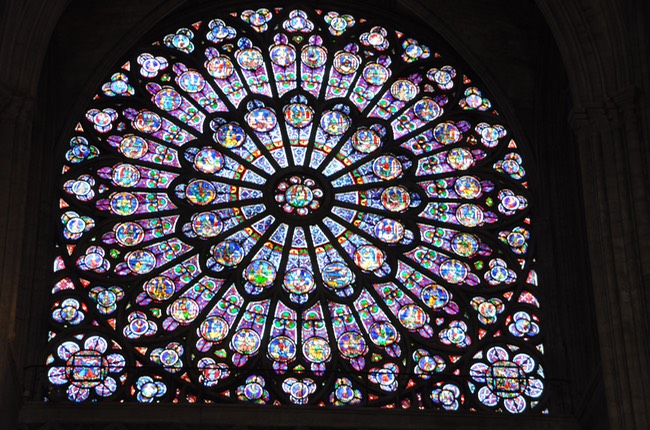
I walk along the side of the nave, stopping occasionally to touch one of the great multiple columns. As I move forward, I catch glimpses of the clearstory windows, where they seem to hover far above the lowly space in which I walk. Reaching the transept, I move out to the centre and, turning slowly, absorb the glory of the choir in front of me, and the great rose windows to either side of me at opposite ends of the transept. The western window, high above the white gleam of the arched portals, is partly obscured by the more modern addition of pipes; in the thirteenth century, the word “organist” referred to a singer of polyphony, and voices were the only music heard here.
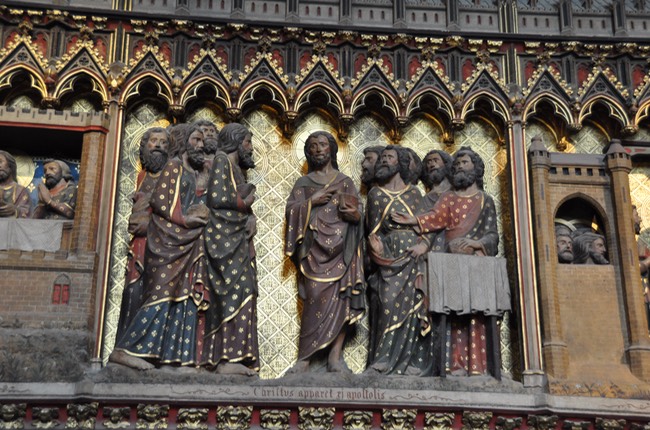
In my mind, I can hear this music, as I have sung it and heard it sung on recordings. It is rich, thrilling, glorious, from a time of one of the first great flowerings of religious music. One of the texts so set was the one that ran: “Locus iste a Deo factus est, inaestimabile sacramentum, irreprehensibilis est.” This place was made by God, a sacrament without price, and is without flaw. It is easy to imagine the glorious, free-flowing setting of these words being sung in this amazing place, where the presence of God and his long-dead servants feels so near.
I leave the cathedral as the Mass is about to begin. When it is over, I know, the tour buses will begin to arrive across the bridges, from north and south, and this place will become a tourist attraction, a piece of history certainly, but with something of its amazing holiness lost. In this early part of the day, it is still possible to touch, briefly, the souls of those who laboured here and worshipped here, from lofty kings and bishops to lowly artisans and labourers; they whose place this was, in the beginning.
Photos: Notre-Dame de Paris; view of the towers from the Left Bank; scuptures on the façade; the gothic nave; the north rose window; freize on the choir enclosure
